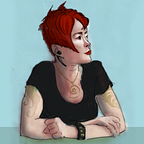From architecture to user experience
In just over a month’s time I am starting a MsC in Human-Computer Interaction Design at City, University of London, having previously worked as an architect in the construction industry in the UK.
My interest in user experience has developed from my background in architecture. I have a zest for creating experiences for people. In architecture, this takes the form of physical spaces for people to inhabit, whereas digital technologies are shaping a kind of non-tangible space that permeates people’s lives. There are parallels between user experience and architecture in the design process too: both disciplines involve user research, iteration and prototyping, collaboration with developers or builders, and an end product that should, ideally, meet the needs of the users and bring them delight.
Why leave architecture for UX?
I feel that user experience can offer me much more than my old discipline for the following reasons:
I want to innovate and to work in an agile way
In my architectural career, I have often encountered conservative methods and attitudes. The process of construction lacks the opportunity to revisit and further perfect the design beyond certain stages. Digital technology and software, in contrast, are rapidly evolving and agile. User experience design will give me a much needed opportunity to embrace innovation and change.
I want to understand users’ behaviour
Empathy is often quoted as a key skill for user experience designers. While I have no formal background in cognitive psychology, I spend much of my time trying to understand the mental processes that affect people’s behaviour, both in my architectural work and in my private life. I cherish the opportunity to use cognitive psychology in the context of user experience.
I want to learn new ways to design and visualise
Areas of design and visualisation within UX that especially interest me are:
- Creativity in Design
The creativity involved in the visual representation of ideas is fundamental to my nature and an essential part of my current role. The field of user experience will fulfil my creative streak and ensure that my talents in this area are utilised for the benefit of others. - Inclusive Design
While I have an architectural background in designing for inclusivity, this module promises to teach inclusive design in a way that goes far beyond the reaches of my old profession. Technological initiatives such as Comic Relief’s ‘Tech vs Abuse’ and ‘Be My Eyes’ have been changing lives of the people who are socially or physically disadvantaged, in fundamental and powerful ways. This is an area of user experience that I would love to participate in. - Data Visualisation
I have been following data visualisation projects such as ‘Information is Beautiful’ and The Guardian’s ‘Data Blog’ for some time. I am in awe of the power of data visualisation, where everything from the causes of the 2011 England Riots to the effectiveness of vitamin supplements can be analysed and presented to the readers in a format that challenges their preconceptions and changes their world outlook. I am keen to develop the necessary skills to do this myself.
I am excited and hopeful for my future in UX and am looking forward to mixing my existing knowledge with the new skills I will be learning on my MsC course this year.
